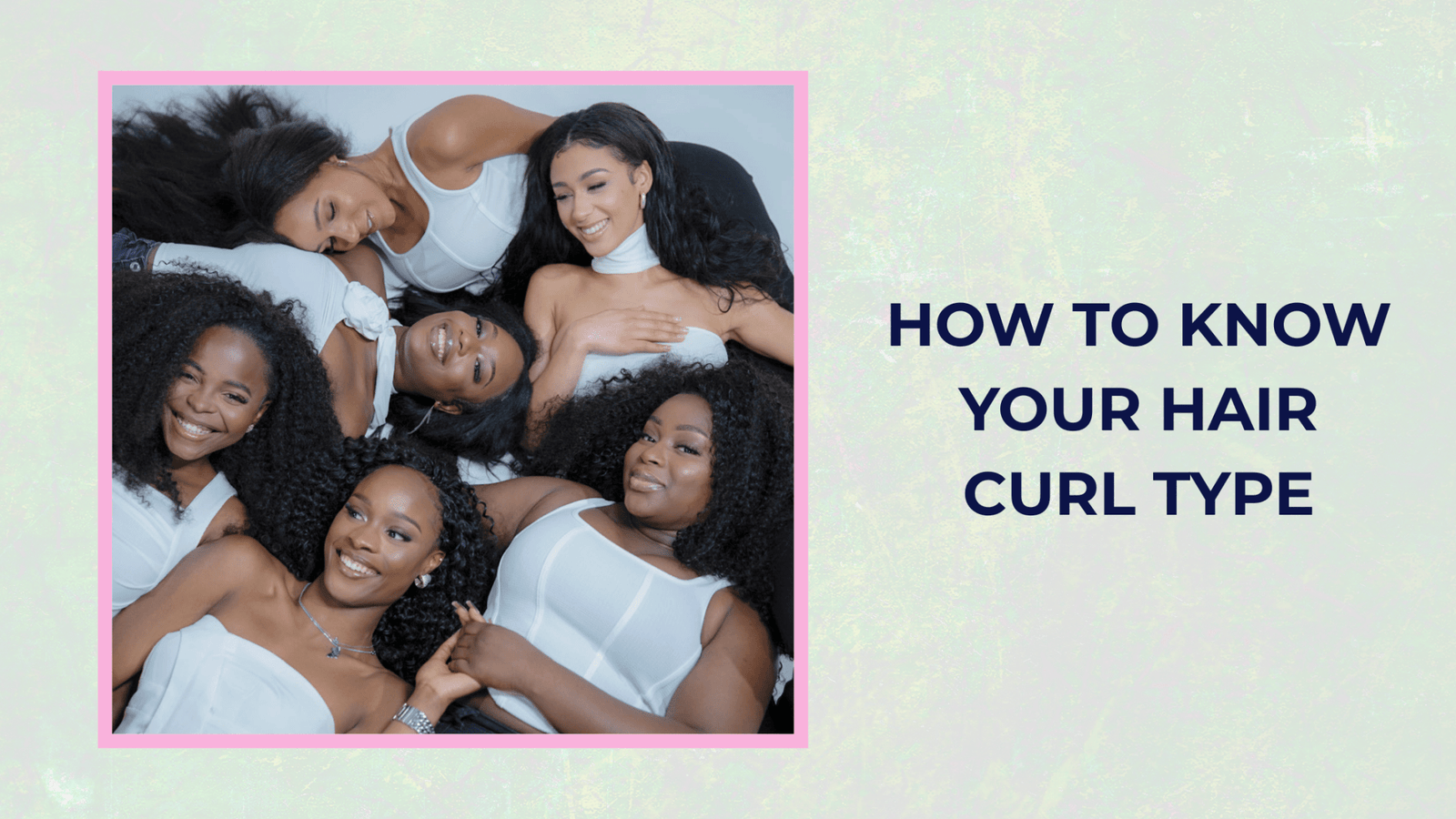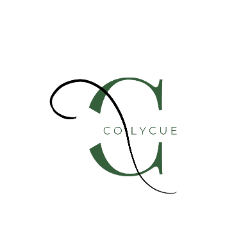How to Know Your Hair Curl Type

When it comes to embracing your natural hair, few things are more empowering than understanding your curl pattern. Whether you're shopping for products, learning how to style your hair, or seeking the perfect wig or extensions, knowing your curl type is the foundation. If you've ever asked yourself, “how to know your hair curl type”, you're not alone, and you're in the right place.
This guide dives deep into curl typing, breaks down each curl category (from 2A to 4C), and teaches you how to identify your hair type using practical, at-home methods that are both reliable and beginner-friendly.
What Is Type 1, 2, 3, and 4 Hair?
Before determining your curl type, it’s important to understand the broader classification system. Hair is categorised into four types:
-
Type 1: Completely straight with no visible curl or wave pattern.
-
Type 2: Wavy hair, ranging from barely-there bends to full, S-shaped waves.
-
Type 3: Curly hair that forms spirals or ringlets.
-
Type 4: Coily or kinky hair with tight curls or zigzag patterns.
Each type has subcategories (A, B, and C), allowing for more specific identification. Learning how to know your hair curl type starts with understanding where your texture fits within this framework.

What Is 2A Hair?
2A hair is almost straight with a subtle wave. It’s fine, lightweight, and doesn’t hold curl very well without heat styling. Frizz is minimal, and the wave pattern is loose and barely-there.
What Is 2B Hair?
2B hair forms more noticeable waves, especially from mid-lengths to ends. It’s more prone to frizz and has a soft S-pattern. You’ll likely need lightweight products to maintain its shape without weighing it down.
What Is 2C Hair?
2C hair is thick and has a distinct S-pattern that begins near the roots. It often gets mistaken for curls due to its volume and texture. If your waves form ringlets or spirals under the right conditions, this is your type.
What Is 3A Hair?
3A hair features large, loose spirals that are well-defined and shiny. These curls bounce with movement and are relatively easy to manage but may frizz in humidity. They tend to retain moisture better than tighter types.
What Is 3B Hair?
3B hair consists of tighter, springy curls that resemble ringlets or corkscrews. The strands are medium to coarse and often need more moisture to maintain their shape. 3B hair is prone to frizz and can be voluminous.
What Is 3C Hair?
3C curls are densely packed and shaped like corkscrews. They’re often mistaken for 4A due to shrinkage but are distinguishable by their uniform curl size and defined shape. If you’re trying to figure out how to know your hair curl type, and your curls are tight but soft, 3C is a good match.
What Is 4A Hair?
4A hair has soft, springy coils with a clearly visible S-pattern. It retains definition better than other type 4 hair and benefits from regular hydration and curl-enhancing products.
What Is 4B Hair?
4B hair bends in sharp angles and has less definition than 4A. The texture can feel cotton-like and is highly prone to shrinkage. It requires gentle care and moisture-rich styling methods.
What Is 4C Hair?
4C hair features the tightest coils with little to no defined curl pattern. It shrinks significantly (up to 80%) and is delicate, requiring lots of moisture and protective styling. If you’re unsure of your hair curl type, and your curls look dense and undefined when dry, you may have 4C.
How to Determine Hair Curl Type: Detailed Methods
If you want to find out how to know your hair curl type, the best way is to observe your hair in its natural state—without the influence of heat, heavy styling products, or manipulation. Here are four essential, in-depth methods to help you uncover your true curl identity:
1. The Wash & Go Test
This method is perhaps the most revealing. It allows your curls to form naturally without interference. Here’s how to do it:
-
Wash your hair thoroughly using a sulfate-free shampoo to remove buildup and any lingering products.
-
Skip all styling products—no gels, creams, or leave-ins. This step is crucial to ensure your curl pattern isn’t altered.
-
Let your hair air dry naturally. Do not towel-dry or comb it while drying. Just let the curls do their thing.
Now observe the shape of your curls:
-
If your curls form loose, wide S-shaped waves or spirals, you likely have Type 3A or 3B hair.
-
If your curls are smaller, tighter corkscrews, especially densely packed, that indicates Type 3C.
-
If you see springy coils with a defined S-pattern, this points toward Type 4A.
-
If your hair dries in Z-shaped coils or looks more angular with less definition, you may fall into the 4B category.
-
If your hair appears tightly coiled with minimal curl definition and high shrinkage, it’s probably Type 4C.
This method is one of the most reliable for discovering how to know your hair curl type, because it showcases your hair’s natural behavior when it’s clean and free.
2. The Shrinkage Check
Shrinkage is a telltale sign of curl tightness, and it plays a key role in determining your type. To conduct this test:
-
Take a section of dry, unmanipulated hair (preferably from the crown or front).
-
Gently stretch the curl downward and observe how much it recoils when released.
Interpret the results:
-
If the curl shrinks back moderately (around 30–50%), your hair likely falls into the 3C or 4A category. These curls are tighter than wavy hair but still have some length retention.
-
If your hair shrinks significantly (50–80% of its length), you’re more likely to be 4B or 4C, where curls are so tight they appear much shorter than their actual length.

3. The Feel Test
Curl type isn’t just about how your hair looks—it’s also about how it feels. This test focuses on the tactile texture of your strands:
-
Take a single dry curl between your fingers.
-
Rub it gently back and forth to gauge the sensation.
Results:
-
If your hair feels silky, soft, or slippery, this indicates looser curls, generally associated with 3C or 4A.
-
If your strands feel cottony, sponge-like, or coarse, you’re likely dealing with 4B or 4C curls.

4. The Density Test
Hair density refers to how closely strands are packed together on your scalp—not to be confused with strand thickness. To perform this test:
-
Allow your hair to dry naturally, without fluffing or manipulating it.
-
Stand in natural lighting and observe the overall fullness and spacing of your curls.
Results:
-
If your hair has visible, clumped curls but still appears somewhat airy or light, you’re likely in the 3C to 4A range.
-
If your hair looks dense, thick, and less defined, often forming tight, non-clumping coils, it’s a strong indicator of 4B or 4C hair.
Density can influence how your hair behaves with volume, moisture retention, and even styling techniques. For anyone learning how to know your hair curl type, this test completes the puzzle.

Why Is It Important to Know Your Curl Type?
Understanding how to know your hair curl type helps you:
-
Select the right shampoos, conditioners, and stylers tailored to your texture.
-
Prevent damage by using methods suited for your specific curl pattern.
-
Find extensions and wigs that match your curl pattern seamlessly.
-
Build a low-stress routine based on what your hair actually needs.
When you know your curl type, you're not guessing—you’re informed.
FAQs on How to Know Your Hair Curl Type
Can you have more than one curl type?
Yes. Most people have a mix of curl types, especially between the crown, sides, and nape.
Is curl type permanent?
Your curl pattern can be altered by heat damage, chemical processing, or hormonal changes—but your natural type is mostly genetic.
Do products affect how to know your hair curl type?
Absolutely. Always test curl type on freshly washed, product-free hair for the most accurate results.
Now that you know your curl type, you’re ready to pick the most natural-looking hair that blends perfectly with your own.
Shop Coilycue’s curl-perfect extensions & wigs—made for every texture, from 3C to 4C.
Browse the collection and find your match →
Let me know if you'd like this formatted for your blog CMS (WordPress, Shopify, etc.) or converted into a downloadable PDF or HTML!



Leave a comment